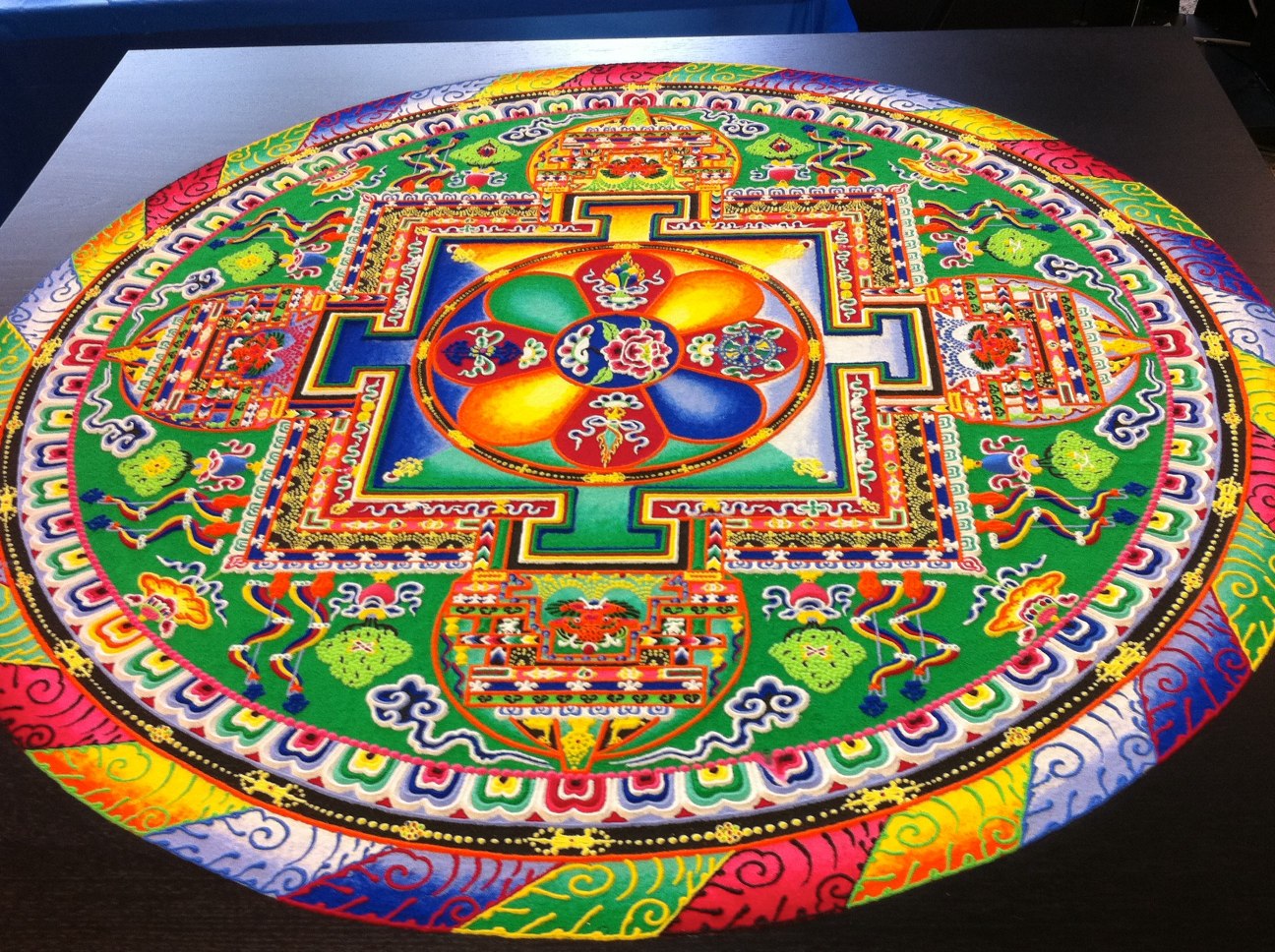Few of the methods we offer are invented by us, more methods are based on cutting-edge research. Yet, some of the most important self-improvement techniques are very old. In this guest article, Daniel Dishman mentions one of the ancient techniques: Buddhist mandala practice. The mandala practice tends to be very complex emotionally charged for the believers, yet it can be practiced by everyone.
The efficiency of memory is determined by the possibilities of its reproduction. Often, it happens that our visual memory is not developed as much as we would like it to be. Studies show that everyone can think with the help of images. Some people realize them while others do not. There are many reasons for this. One of them may be unconscious overlapping of awareness of internal images.
Students don’t like writing papers on topics about negative life experiences and prefer asking professional writers at official website of Writix to do this instead of them not to recollect unpleasant situations. How does our psyche work when having a negative experience? For example, let’s take a small child who saw something that he did not really want to see: how his parents were arguing, or some terrible event happened. Due to the fact that these moments can injure our psyche, unconsciousness begins to limit our ability to realize images, sounds, sensations.
Why Is It So Important to Visualize All Life Events?
As previously mentioned, when something bad happens before our eyes, we tend to forget what we saw, heard, or felt, diminishing our overall ability to perceive the world fully. Our unconscious mind generalizes a single experience to all our perceptions of similar events. This might explain why many people with poor eyesight who take courses involving perceptual filters often see improvements in their vision.
These limitations affect our lives significantly. We struggle to remember faces and objects clearly. Many psychological techniques rely on a person’s ability to vividly visualize life events, but not everyone can do this effectively, leading to the techniques’ failure. Experienced consultants are aware of this and teach individuals to become more aware of their mental images before implementing any techniques.
What is Mandala and Which Role Does It Play for the Memory Development?
In this article, we are going to consider the mandala as a way of developing visual memory. In Sanskrit, “mandala” means “circle” and “center.” Traditionally, it is denoted by a circle – a symbol of the cosmos in its infinity, and a square – a symbol of the earth or the world created by a man. In Tibet, the mandala has reached its fullest development both as a mandala art and as a ritual of meditation. There are many different mandala designs with different mandala coloring.
There is an opinion that mandala inevitably leads the one who uses it to the discovery and use of the source of internal energy. The principle of the mandala artwork is not concluded in an external form, which is specific to each situation, but in the center, the source, through which the energy flows.
Visual images like shape, colors, and movements have a different mental effect on a person. If you represent the structure of a graphic mandala drawing in the form of its constituent elements, you will get a series of geometric figures (large and small circle, square, triangles). These figures are considered sacred in almost all religions. Their use as objects of concentration in religious rituals is usually explained by appropriate mystical constructs.

Thus, in various schools of Buddhism, which widely use the practice of meditation with the mandala, it is believed that the mandala painting is a model of the universe, which includes everything that exists in the Universe:
- Earth
- Water
- Fire
- Air (wind)
- Heavenly space
Thus, working with a mandala, a person works with all the elements that exist in nature. From the point of view of modern positions of neurophysiology and psychology, the influence of geometric figures is explained by specific signals that they cause in the oculomotor muscles and the visual analyzer. The eye is purely reflexively tracing the contours of the image. In the places of the broken lines, the oculomotor muscles abruptly decrease, which is associated with the generation of corresponding, sharply varying nervous signals.
On the contrary, when contemplating smooth lines, the oculomotor muscles experience increasing contractions. Thus, the visual apparatus is trained. The graphic image of the mandala is geometrically balanced and has a center of symmetry. It represents an aesthetically pleasing image and causes spontaneous (involuntary) visual concentration.
How to Work with Mandala the Right Way?
It is desirable to print the mandala and paste it into a more rigid material ( for example, take cardboard), and make a stand. This will allow you to put the mandala anywhere and adjust the angle of the deviation of the picture. When you work with a mandala, it is advisable that no one disturbs you. It won’t take you much time. Spending maximum 10-15 minutes a day at the most convenient time regularly you will reach great results.
There are 6 stages of work with mandala:
- Put the mandala in front of you. Place it on a table if you sit on a chair or on the floor if you sit on the floor.
- Start looking at the center of the mandala. You should focus your attention on the center. Concentration in the center of the mandala closely adjoins the process of purifying the mind and body. This is the concentration of dissipating “eyesight,” focusing it on one central point.
The process of concentration is the gradual removal of all anxieties and attachments, the desire to focus your consciousness and keep it in a stable state. Try not to blink, since blinking knocks down the flow of information that comes.
- In the process of looking at the center of the mandala, you should try to ensure that you have seen the whole picture, by including peripheral vision. You shouldn’t move your eyes back and forth. On the contrary, fixing your eyes at one point (the center of the mandala), you can see all of it as a whole.
- Wait until various visual effects start to appear. They are very individual. For example, it can be: an occurrence of the picture volume; darkening of the picture along the edges and a bright clearing in the center (the effect of tunnel vision); one figure begins to prevail as if to overlap the others; color game, etc.
All these 4 stages will take no more than 2 minutes.
- You should close your eyes and look into the space that will come off in front of you in anticipation that you will see the projection of the mandala. You look at the mandala until it starts to disappear.
- You can repeat all over again.
If you have already trained the reproduction of the mandala with your eyes closed, then you can slightly change the course of the experiment. At the 5th stage, you do not close your eyes, but simply turn your eyes to a solidly colored wall and wait until the image is projected there.
Which Difficulties May You Face?
The most common difficulties people face when working with mandalas for the first time are the following: the image of the mandala does not appear; the image appears, but weakly; there is a black-and-white projection instead of the colored one.
Such facts may indicate that your visual memory has been blocked. Apparently, you experienced some stress in your life and “refused” to look at something. Therefore, you just need to train and restore your ability to be aware of inner images.
If, when closing eyes at the 5th stage, you see the mandala with an inner gaze, if the picture is not stable, if it disappears, then do not strain your eyes trying to hold it. It is better to repeat the exercise once again. If you wear glasses, this is not an obstacle. Try it both in glasses and without them, choosing the most convenient way.
Benefits You will Get When Working with Mandala
The work with mandalas allows you to remove restrictions on your ability to be aware of internal images providing the psychotherapeutic effect. It allows your eyes to rest and turns on the peripheral vision. If you saw only black and white dreams or did not dream at all, then after training with mandalas, you will be able to see colored dreams. You will be able to develop memory significantly. Most importantly, after exercises with mandalas, you will be able to remember anything!

Get 4 Free Sample Chapters of the Key To Study Book
Get access to advanced training, and a selection of free apps to train your reading speed and visual memory
